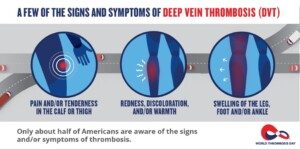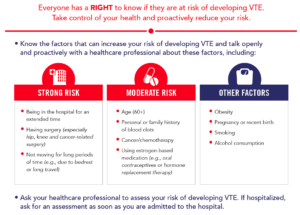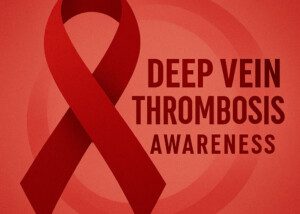If you’re a health conscious man, are you aware that men are four times more likely than are women to develop a life-threatening blood clot, especially in older age?
Not only that, but the recurrence rate of blood clots is higher in men, once they cease taking oral blood thinners (anticoagulates).
Brush up on Your Blood Clot Terminology
From the World Thrombosis Day campaign presented by the International Society on Thrombosis and Hemostasis, the world’s leading organization of experts on this subject.
Thrombosis. This is the formation of a blood clot inside a blood vessel. The vessel may be a vein or an artery, any location.
DVT. A deep vein thrombosis is a common type of blood clot that forms in a vein. It usually develops in lower extremities or the pelvic area.
If a piece breaks off it can travel to the lungs where it becomes a pulmonary embolism (PE) and may be immediately life threatening.
A substantial number of people worldwide are killed every year by a PE.
Ischemic stroke. An arterial blood clot can travel to the brain and cause an ischemic stroke, which obstructs the flow of oxygenated blood to the part of the brain that the blocked vessel feeds.
VTE. A combination of a DVT and PE is called a venous thromboembolism.
Anticoagulant medication. Also known as a blood thinner, this type of drug thins the blood, making it less “sticky” or prone to clotting, reducing the risk of DVT and stroke. Examples include heparin, warfarin and edoxaban.
Men and Blood Clots
“Although anyone can develop a blood clot, men are at a higher risk for developing recurring VTE than women.
“In fact, men are four times more likely to develop a blood clot than women and this only increases further with age.”
– Jean M. Connors, MD, World Thrombosis Day Steering Committee Member, Medical Director, Hemostatic Antithrombotic Stewardship, Medical Director, Anticoagulation Management Services, Brigham and Women’s Hospital and the Dana Farber Cancer Institute, Associate Professor of Medicine, Harvard Medical School
DVT Signs and Symptoms
Anyone can develop a deep vein thrombosis, including non-overweight athletes.
o Swelling of the affected limb.
o Pain or tenderness that’s not caused by injury or a pulled muscle.
o Skin that feels warm to the touch, is red or discolored.
o The pain may feel like a cramp.

PE Signs and Symptoms
o Trouble with breathing.
o Chest pain that gets worse with a deep breath or a cough.
o Coughing up blood.
o Elevated heart rate or irregular heartbeat.
o Feeling faint; passing out.

Why aren’t blood clots listed as a leading killer in “top 10” causes of death lists?
The top three causes of death worldwide are consistenly heart disease, cancer and stroke. Blood clots aren’t even in the top 10. Why is this?
“Even though venous thromboembolism (VTE) and other forms of thrombosis are the cause of death for one in four people worldwide, VTE is a frequently overlooked and misunderstood condition,” says Lana Castellucci, MD, FRCPC, MSc, Scientific Steering Committee member for World Thrombosis Day.
“The symptoms of VTE (pulmonary embolism and deep vein thrombosis) overlap with other conditions including heart attack (blockage of arteries of the heart), and PE may be undiagnosed or misdiagnosed.
“Cause of death is then attributed to better known diseases like heart attack.
“Even though venous thrombosis is the root cause, it fails to make the top 10 causes of death list, because it becomes linked to other, more well-understood conditions that are labeled the cause of the death.”
For more information: worldthrombosisday.org


 Dr. Castellucci
Dr. Castellucci







































